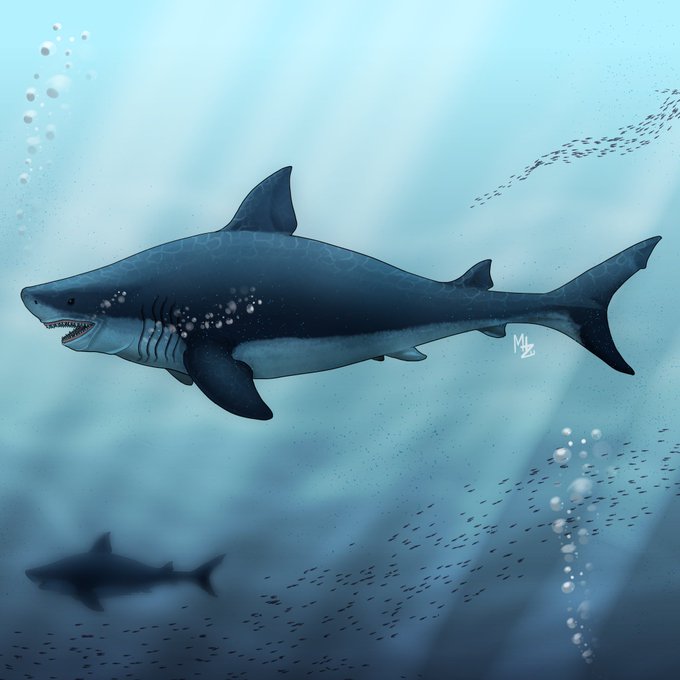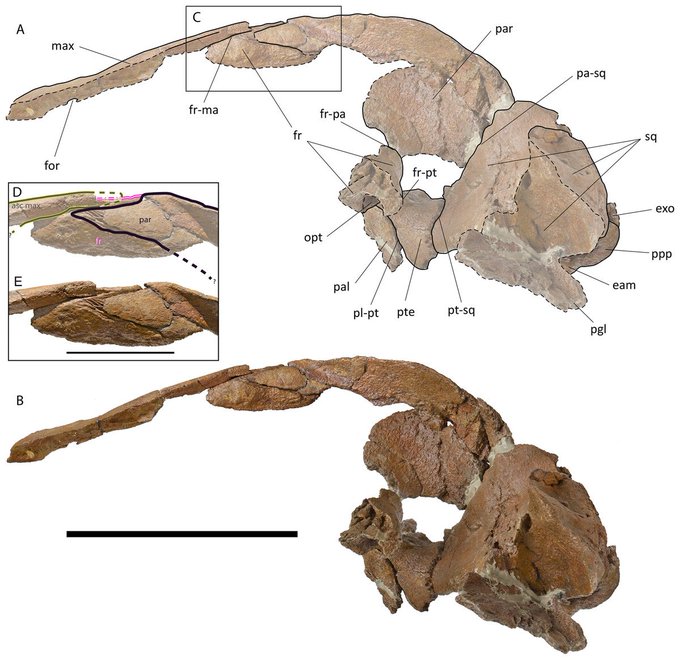PlioceneのTwitterイラスト検索結果。 46 件中 2ページ目
The mighty Siberian duo, Elasmotherium sibiricum (Thin Plate Beast) and a Saiga antelope. Elasmotherium lived during the Late Pliocene (Piacenzian Age 2.588 MYA) to Late Pleistocene (39,000 years ago) and was named by Gotthelf Fischer von Waldheim in 1808. With four
Megatherium. Early Pliocene to Early Holocene, 5–0.010 million years. Extint gebus of ground sloth. Skeleton in Natural History Museu, London (via Wikipedia, Creative Commons). Art by Maurice Wilson. #cigarettecard #MauriceWilson #Megatherium #Sloth
Nuralagus rex was a giant rabbit that lived on Minorca until the Pliocene. After Minorca briefly connected with Majorca, Nuralagus is replaced by Myotragus in Pleistocene & Holocene deposits, suggesting the caprine might have outcompeted the leporid.
Art by Ceri Thomas.
Bread dude no. 19
Acemitas are soft and sweet bread buns
#digitalart #digitaldrawing #paleoart #pliocene
It's #InternationalSnowLeopardDay! Let's check out one of the oldest big cat fossils known - this skull from Panthera blytheae, an early extinct big cat.
This fossil was found in the Tibetan Himalaya Range and is estimated to be from the Late Miocene–Early Pliocene (~6 MYA)!
[Megalodon]
meaning "big tooth", is an extinct species of shark that lived approximately 23 to 3.6 million years ago, during the Early Miocene to the Pliocene.
#Artist #sharktober #SharkWeek #art #drawing #digitalart
Lady Epone from #SagaofPlioceneExile, an obscure scifi book series I love! #ArtistOnTwitter
For #fossilfriday I would like to introduce Protororqualus wilfriedneesi, a new balaenopterid genus from the southern North Sea. #pliocenerenaissance #whales #cetacea #peerj
SHARK WEEK FACTS- Tuesday
Charcharocles Megalodon
-Lived through the Early Miocene to the Pliocene
-Destroyer of Whales
-Would probably speak in a gruff Australian accent
-Once thought to be an ancestor of the Great White Shark, now known to be in its own group: Otodontidae
Hexaprotodon sivalensis is an extinct species of hippo from the Pliocene of south Asia.
(Credit: WillemSvdMerwe)
The American zebra or Hagerman horse was an equid from North America that lived during the Pliocene epoch.
(Credit: InkArt)
And this is the above-mentioned Burtele foot (3.4 Ma)...
A new hominin foot from Ethiopia shows multiple Pliocene bipedal adaptations https://t.co/dcUgRtaZLl #FossilFriday
I finally have a bit of time to sketch in the morning. The recent study on Thylacosmilus published last Friday made me want to sketch some portraits of this amazing Late Miocene-Pliocene South American sparassodont #Paleoart #sciart #MammalMonday
A new discovery represents the most diverse European herpetofauna across the latest Miocene/earliest Pliocene, comprising at least 30 distinct species and two new genera and species of #snakes!
G.L. Georgalis, A. Villa, M. Ivanov, D. Vasilyan, M. Delfino
https://t.co/BDBjaJuNjC
I just found out that today is #InternationalRabbitDay so I decided to quickly sketch one of the oddest extinct rabbits, the LARGE (50 cm tall, about 15-20 kg) Nuralagus rex, which lived on the island of Menorca 5 to 3 million years ago (Miocene and Pliocene) #paloeart #sciart
A recent discovery in Panama provides a glimpse at shark-whale trophic interactions from the Pliocene!
Dirley Cortés, Carlos De Gracia, Jorge D. Carrillo-Briceño, Gabriel Aguirre-Fernández, Carlos Jaramillo, Aldo Benites-Palomino, and Joaquín Enrique
https://t.co/tVIUx14u98
New paper! Part of my work during my 2017th internship at @stri_panama! We report shark-cetacean interactions from Eastern Panama’s Pliocene. https://t.co/8U4mELSzmX #fossils #vertebratepaleontology #whales








































